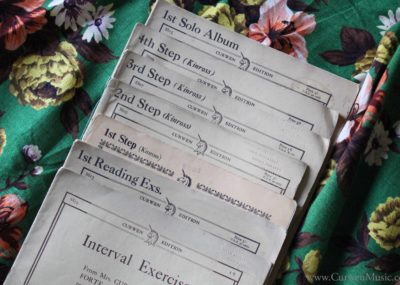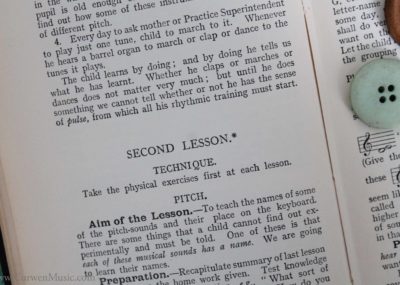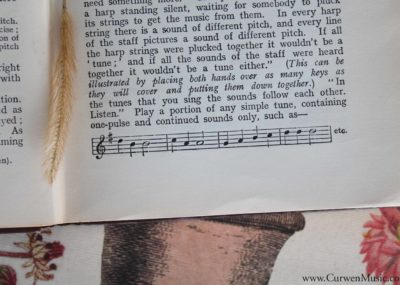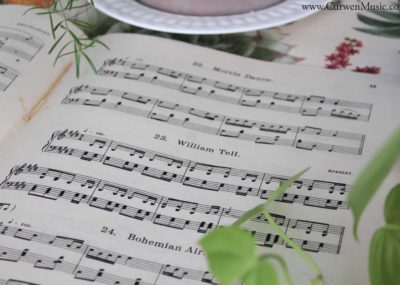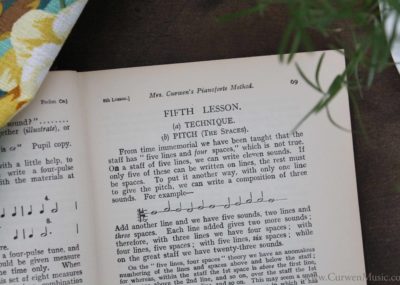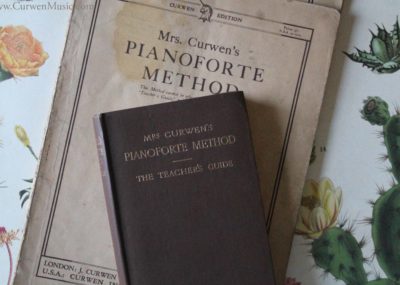This page allows access to written instructions for parents or piano teachers looking to teach their children without the student video lessons.
Click here to access the Student Lessons in video format
This is where Mrs. Curwen starts each student. There are five lessons that must be completed prior to putting any music on the piano for the student to read.
If you are teaching your child from home, you can cover one topic a day from a single lesson. That’s better than covering an entire lesson in one sitting. A beginner student (Mrs. Curwen recommends age seven) may take a full term to learn these five lessons. An older student with some musical training may go much faster.
Lastly, the child must master Lessons 1-5 before moving on to Mrs. Curwen’s 1st Step. The teacher should continue to review and test the student’s grasp of each concept even after moving to the 1st Step. Any wavering in the child’s understanding means the teacher needs step back and reinforce the fundamentals taught in these Preliminary Lessons.
If you are comparing the Student Videos section to these written instructions for Piano Teachers, the break downs will not be exactly the same. For example, the 4a student video won’t exactly match the 4a written instructions. In the videos, I do a great bit of reviewing with the student to make sure the foundations are well understood. And if following along in Mrs. Curwen’s Method book, the letter nomenclature in 4a, 4b, etc. are for website organization and are not clearly laid out in her book.
Mrs. Curwen has specific instruction for how to start a beginner piano student. She lays out five lessons that she refers to as the Preliminary Course. The child needs to investigate and discover for himself the elementary facts of music.
To engage the child’s interest in his new work. To enable him to get first hand – i.e. by experience – ideas about the piano and about those musical facts which we call Time and Pitch.
To teach the names of some of the sounds and their places on the piano’s keyboard.
To help the pupil to recognize pulse, accent, and measure in the music that he hears.
To teach the meaning of an “Interval,” and to give first ideas of fingering and keyboard measurement.
To fix the locality of the pitch sounds by keyboard exercises, which are to be repeated until they can be done rapidly and almost mechanically.
To teach the Staff (the arbitrary symbol of pitch), and give clear ideas about it.
To show how the Staff for piano spans a ladder of eleven lines, picturing sounds a 3rd apart, spanning from low G to high F.
Explaining the C Clef, G Clef, and F Clef, and establishing fives lines on the staff that the child knows.
Dictation of additional names and pitches on the staff.
To teach the signs of the quarter note, half note, and whole note. Also, teaching a bar line or strong accent mark.
To find the names and pitch of the sounds left out when building up the staff in the order of thirds.
To show the use of a five lined staff, and to lead up to the division of the eleven lined staff into two portions for piano music.
To give clear but simple ideas about the meaning of rhythm as the basis of music.
To check the teacher’s work; to secure that nothing has been left out, and that the child is ready to begin to use the Lessons, Reading Exercises, and Duets of Step I.

